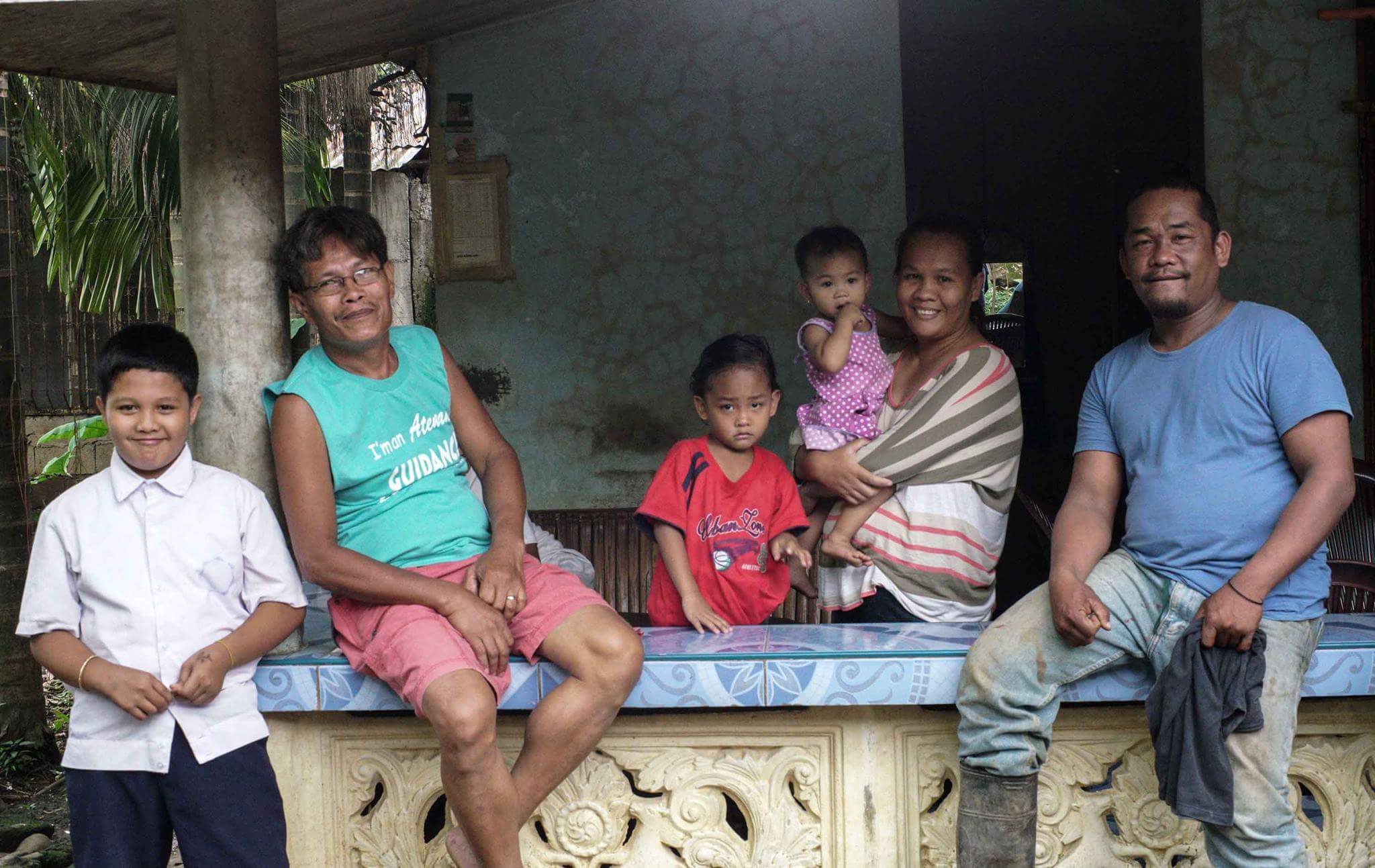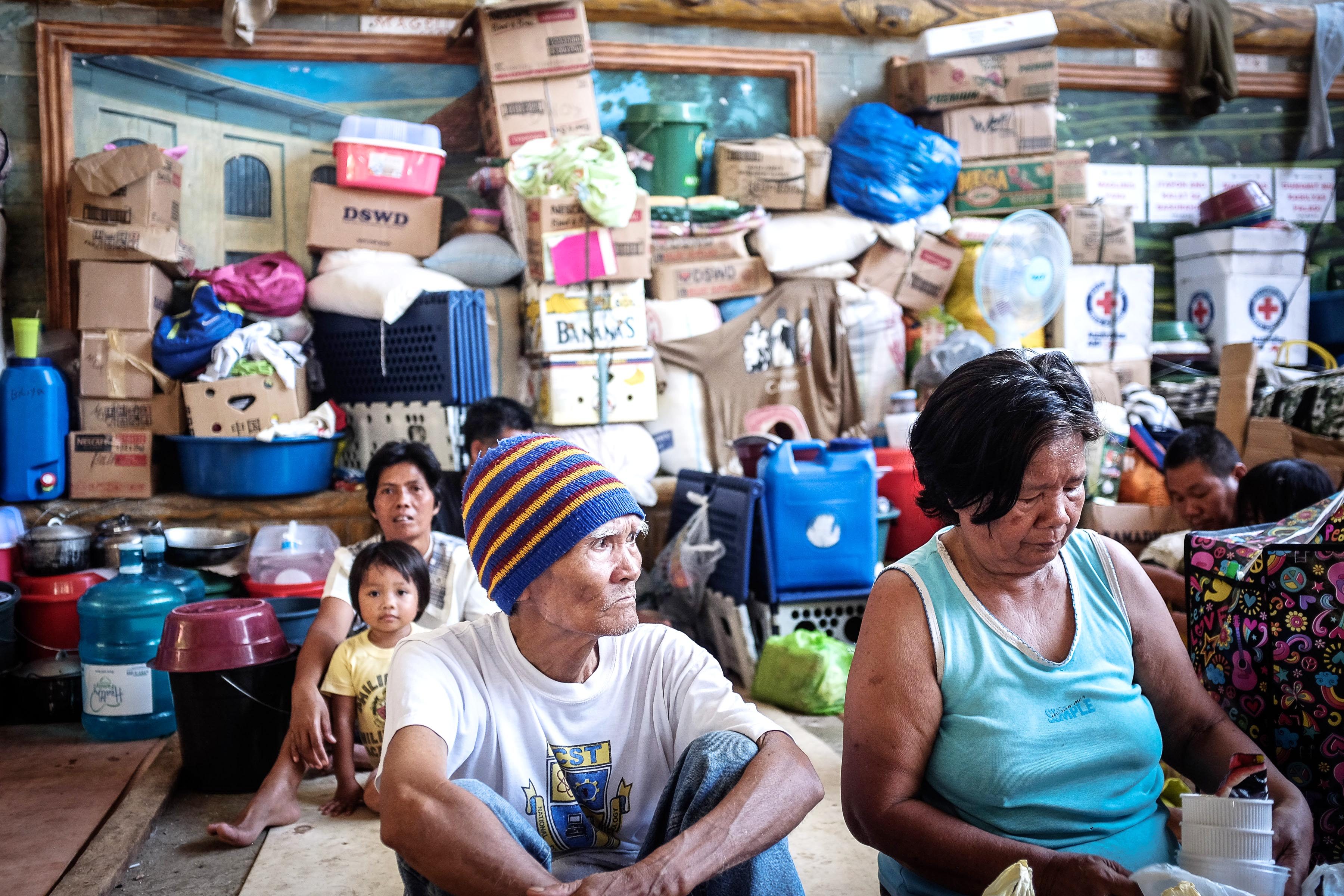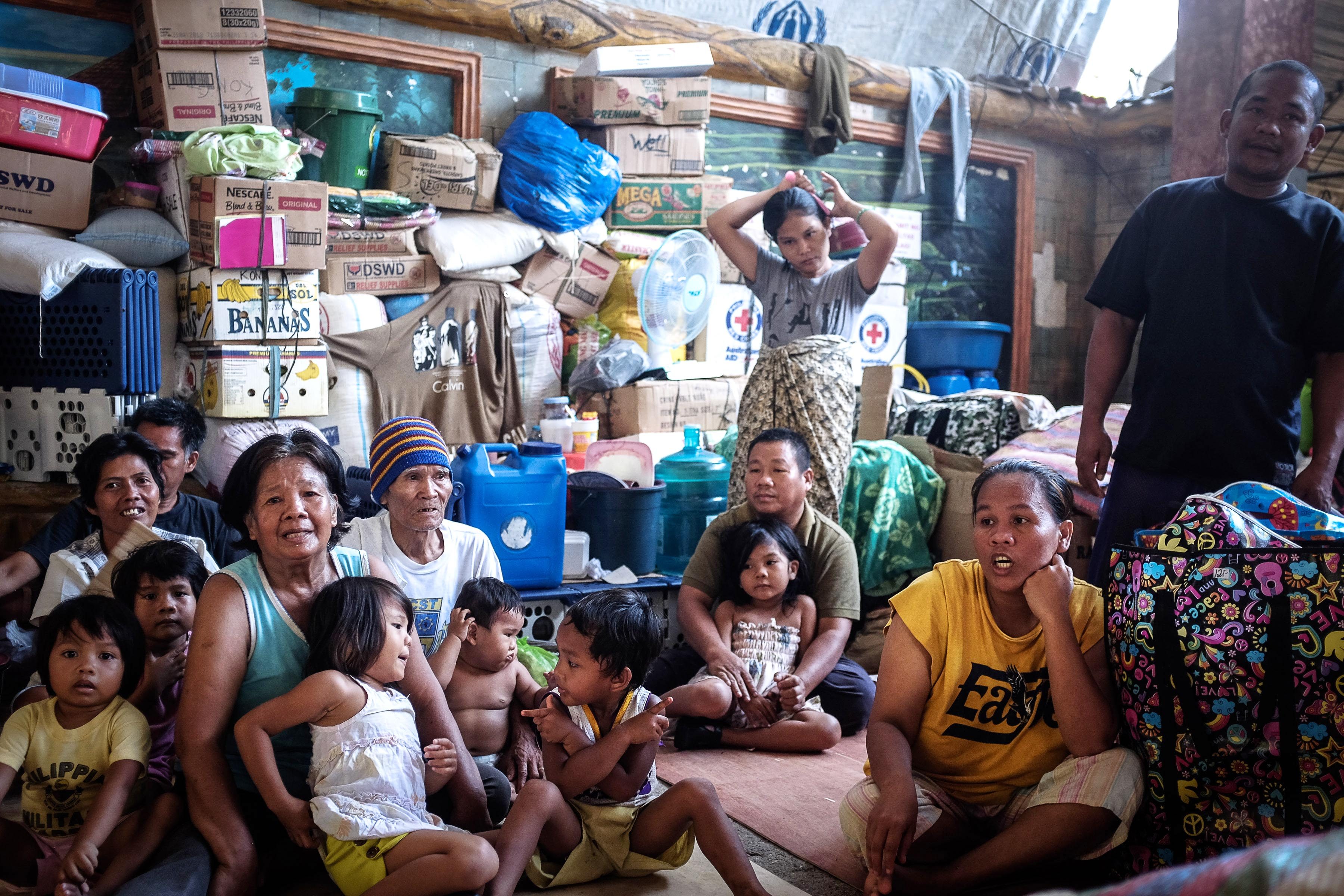SUMMARY
This is AI generated summarization, which may have errors. For context, always refer to the full article.

BUKIDNON, Philippines – On May 23, Ronnel Samiahan and his brother-in-law, Claudio Hamulong, were working inside a house near Dansalan College in Marawi. They did not hear the sounds of gunfire from Barangay Basak Malutlut, where a military operation had begun against Islamic State (ISIS)-inspired local terrorists.
When Ronnel and Claudio finished work and left the house, they wondered why the streets were empty. They walked towards the next block and saw people scampering, running in every direction with their belongings.
Unsure of what was happening, the two ran towards their house, an old convent in front of St Mary’s Cathedral.
The Hamulongs had lived in Marawi City for the last 15 years. They left the plains of Calabugao in Impagsug-ong, Bukidnon, because of the war between the government and the communists. Now they found themselves again in the middle of an armed conflict, but this one was different – it was more brutal; more ruthless.
When they reached their home, Ronnel’s wife, Yolanda, told him that she had been texting him since 2 pm – around the time the siege on Marawi began – but he didn’t get to read them as his phone was inside his bag left on the 2nd floor of the house they worked in.
“It was only then that we realized that there is war already, that the Maute have attacked the city,” Ronnel said.
At 6 pm that day, the Hamulongs saw a van stop across their home, in front of the cathedral. Then they saw people being dragged out of the church, including Father Teresito Soganub.
The terrorists headed to the convent and knocked on the door. Ronnel’s family, along with his in-laws’ families, fled to the back of the convent and hid among the bushes and bananas.
“The Maute searched for us because they know Christians were living there,” Ronnel said.
The family members moved towards the fence on the other end, as the terrorists, using flashlights, looked for them on the other side.
Yolanda said that they did their best to keep quiet. The children understood what was happening and none of them cried, even as the entire family endured spending the night under the rain. Through the night, they would hear the terrorists return to the fence, and motorcycles whizzing by.
The family returned to their home the following day. Baby Magarang, the wife of former barangay chairman Omar Magarang, called them and told them to go to the house of his son, Oraque, the current village chairman.
They joined about 200 other people in the village chairman’s two-story house. Omar told them to hide in the second floor of the house, while the Maranaos remained on the ground floor.
“That way, if the terrorists would come knocking, they would see the Maranao, not us,” Ronnel said.
When 3 Maute fights camped in the house next door on May 25, Omar announced that they should all leave his son’s house. All of the people in the house, including the owners, organized themselves so that the Christians were in the center, while the Maranaos stood on both sides to protect the former.
“The terrorists just looked at us when we went out, but they also keep a lookout on where we would be going,” Ronnel said.
They all made it to a still unfinished Pangarungan Hospital where they hid for two days.
On May 27, Omar said that they needed to reach Mapandi bridge or else, they would all die there. Once again, the Muslims encircled the Christians to protect them.
One motorcycle-riding terrorist tailed the group as it headed for the Mapandi bridge, where there were around 20 terrorists manning a checkpoint.
Terror on the bridge
The terrorists made them sit on the street where they saw child warriors. One sharpened a knife, while another held a video camera. (READ: Maute child warriors are fiercest fighters, says former hostage)
The terrorists then separated the men from the women and children. They dragged the men to the center of the street to separate the Christians from the Muslims.
“They asked us, ‘Assalamalaikum Salam,’ and if we failed to answer, they would separate us [from the group],” Yolanda said.
A terrorist who was holding a bloodied machete came forward and moved his weapon forward to signal a beheading. “We were so scared that nobody said a word. The child with the knife also made that sign,” Yolanda added.
After Yolanda and her 5 children were cleared along with 5 other women, they were allowed to cross the bridge.
Halfway across the bridge, a terrorist came running after them, pointing his gun towards them, ordering them to go back.
“Liars!” a long-haired fighter yelled to them. He said that the group that was just allowed to pass through included Christians.
Ronnel was separated from the group, along with 16 other men. Their right hands were bound with red mountaineering rope.
Ronnel’s 4-year-old son clung to him and cried as his father was being tied up. Ronnel’s mother-in-law rushed forward to get the boy, begging for mercy.
Fear was on everyone’s face. All the time, the terrorists were taunting the evacuees, using their guns to poke their heads and bodies.
“They said that Christians should not have come to Marawi because it is theirs. They said: ‘Go to Cebu or Manila. Marawi is ours,’” Yolanda recalled the terrorists telling them.
The whole family, except for Ronnel, was allowed to pass. Yolanda’s 80-year-old father was the last one to be allowed to go through.

Inside the room
Ronnel and the other male hostages were led to room where there was already an occupant – a Maranao man in handcuffs.
The hostages were lined up with the ISIS black flag in the background. One terrorist took their video. A terrorist taught a teacher what to say on camera.
The demands of the terrorists were for the army to abandon the bridge and for the Christians to leave Marawi because the terrorists would establish an Islamic State there.
That night, the handcuffed Maranao man they saw earlier that day tried to break his handcuffs with the help of another Maranao but did not succeed. The next morning, a terrorist barged into the room and asked, “Who was making that noise last night?”
When no one answered, he repeated the question, this time sounding angrier and more agitated. “If no one will answer or come forward, all of you will be killed this moment,” the terrorist said.
One Maranao man pointed to the man in handcuffs. The terrorist then came forward and removed the man’s handcuffs.
“We thought he will be freed, but instead, he was handcuffed again behind his back,” Ronnel said.
The man was dragged towards the street. The hostages inside the room were told to watch what would happen or they would be shot.
The Maranao man was made to lie flat on his belly. A small figure, clad in black, approached the man. He was wielding a knife.
“He must be a child. I cannot see his face because he was wearing a mask but I know what a child looked like. His hands are small,” Ronnel said.
Another child was holding a video camera, recording what would be Ronnel’s most harrowing experience. The child grabbed the man’s long hair, then slit the man’s throat. (READ: I met a Maute soldier. He’s a child)
Blood spilled on the street. Ronnel heard the man gasping for air as the boy continued slicing his neck.
“It took almost 5 minutes to cut through. I screamed inside my head, holding back my tears as they commanded us to shout, ‘Allah Wakbar (Allah is greater),’” Ronnel recalled.
As the child cut through the hostage’s neck, other terrorists screamed “Allah Wakbar,” exalting the child’s act. Ronnel said the other child who recorded the beheading was shaking.
After he finished his task, the child put the head on the back of the man’s body.
Another terrorist came towards the hostages, sparking fears of another beheading. Instead, the terrorist freed 3 men, and ordered them to put the decapitated body in a sack and the head in a bag. They were to bury the body near the transport terminal close to Dansalan College, then return.
Only two came back, as one was able to escape. That night, the terrorists told the hostages that the next morning, one of them would be beheaded because one of them escaped.
The escape
On May 29, the dreaded day of another beheading, military choppers were starting to strike the area near Mapandi.
Ronnel and the other hostages heard the choppers launch strikes close enough that their building shook.
One of the hostages said he would try to open the roll-up door of their room. He was able to lift it a few inches, and saw that only one side was padlocked. When they tried to raise the side with the padlock, they saw that the padlock was only hooked into the slot, not locked.
The youngest hostage reached out to get the lock and removed it.
The men then agreed to open the door when they hear another bomb hitting its target. As soon as they heard their cue, they pried open the door and dashed towards the bridge.
When they reached the middle of the bridge, most of the men jumped into the water and waded to the other side.
Of the 16 hostages, 11 hostages jumped into the water, including Ronnel, but only 10 reached the shore. One hostage was dragged by the current and was never seen again. Ronnel had no idea where the other hostages fled.
The 10 men made their way to the PhilHealth office, where they were met by the police.
“I know that after I climbed out of the river, I know that I am free, that I can finally see my family,” Ronnel said.

Ronnel had a joyful, tearful reunion with his family at the Buru-un evacuation center in Iligan City days later. The fact that all of them survived the ordeal was nothing short of a miracle.
The whole family had since returned to Impasug-ong in Bukidnon where Ronnel worked as a welder.
Asked if they would ever return to Marawi, Ronnel and his family said they would never go back to the place where they experienced a kind of terror that had made them sleepless to this day. – Rappler.com
Add a comment
How does this make you feel?
There are no comments yet. Add your comment to start the conversation.